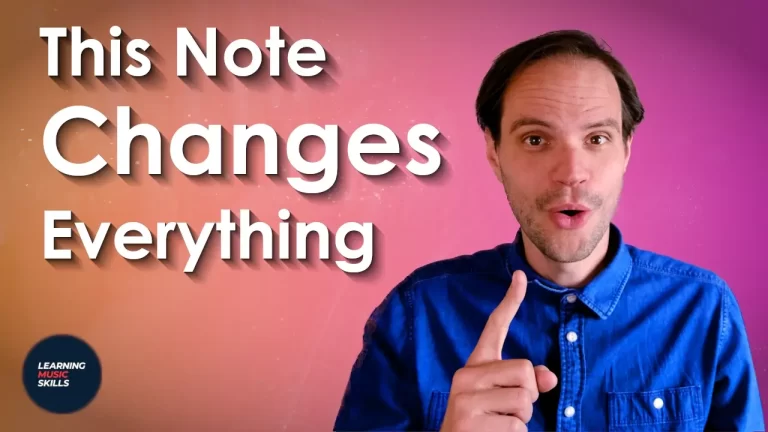Using an inverted pedal point in your chord progression is a harmony technique so easy you will never forget it! So what is a pedal point in

What is a pedal point or pedal note?
A pedal point or pedal note is a very old technique and you can find it in virtually any style, time, or
You can see this technique in action in my videos on modal chord progressions. And more specifically in my video on Mixolydian chord progressions. A more in-depth article about regular pedal points will follow.
Where does the term Pedal point come from?
The definition of pedal point comes from the church organ or pipe organ. This is because the lower bass notes are played with the pedals and they can be sustained endlessly.
How can you experiment freely with pedal notes?
- Sustain any low note
- Freely improvise a melody on top
- Listen to what notes create tension and want to resolve
- Combine these with consonant tones
- Repeat this process with normal chords
Video Tutorial: How An Inverted Pedal Point Changes Your Chord Progression.
If you want to hear how the
Inverted Pedal Point
What is an inverted pedal point?
An inverted pedal point is when a pedal note is not in the bass. Instead, it is in the highest voice or part or somewhere in the middle. And this sustained note can be used to create suspensions, and tension notes and add beautiful colours to your chord progressions. The best thing of all is that this technique is very easy to apply.
Below we have a regular diatonic chord progression. How can we use an inverted pedal point to spice up this chord progression?


Inverted Pedal Point Guitar
On guitar, it is quite easy to play a pedal point and move some chords around the neck. If you haven’t tried this I recommend that you do! For example, Jimmy Page plays a pedal point on the E string that is detuned to D in Kashmir. I talk more about this song in my tutorial about augmented triads.
An example of an inverted pedal point on the guitar is the live solo from Californication by the Red Hot Chilli Peppers. Flea lays down the bass fundament and John plays a melody while repeating the E string as a pedal point.
Adding Tension with An Inverted Pedal Point
When you add the inverted pedal point to your chord progression it is important to listen and check on which chords it will sound dissonant or consonant. This way you can have the result that you want. In general, if the pedal note is part of the underlying chord, then it will sound consonant. If it is a tritone, 4th, major or minor second, and sometimes a seventh it will sound dissonant. Also, if it is a major 6th on a minor chord or a minor 6 on a major chord it will sound dissonant too.


Inverted Pedal Note That Blends
Sometimes you want extra colour in your harmonies, but you don’t want any extra tension or dissonance. If this is the case, then you need to make sure that your inverted pedal note is part of your underlying chords. Maybe not all, but at least most of them. In our example below, the pedal point is part of the first two chords and it creates a soft consonance and dissonance on the last two chords.


Conclusion
Pedal notes can be amazing. Especially when you want to create some lush harmonies without too much effort. Keep in mind that the pedal point doesn’t always have to be in the bass. It can be just as beautiful when it is in the middle or the top part of your chords!
You can also check out the wonderful technique of parallel chords. This is probably the easiest technique for original chord progressions and melodies.
